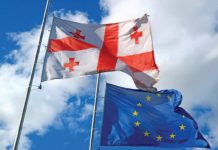By William Hobbs, Head of Investment Strategy, UK and Europe, Barclays
How much of this new US administration’s often fluid and sometimes contradictory agenda should we assume makes it through to policy? How powerful is the POTUS? We look at some of the proposed policies and examine some of the areas where the constitutional restraints are a little looser.
The complex task of trying to understand what this new US administration means for the business world should start with a relatively simple question – Just how much power does the President of the United States have? POTUS is often depicted as the most powerful human being on the planet, whether battling alien invasions, vampires or just an assortment of home invaders, fiction portrays the inhabitant of the Oval Office as central to all our fates. The post war history of the US economy would, at first glance, seem to support this idea.
Admittedly, this period from President Truman’s second term up to President Obama’s first term, covering only 16 presidential terms and 12 different presidents (seven complete Democratic terms and nine complete Republican terms), represents a small sample size. However, we are limited in our scope by the availability of plausible economic statistics. Anyway, in their opening shot in a still lightly furnished debate, Blinder and Watson (2016) find that real GDP growth over the 60 odd years in question averaged 3.3% per annum. However, the average growth rates under Democratic and Republican presidents were starkly different: 4.3% and 2.5% respectively (Figure 1 – US GDP growth by presidential term). This startling gap in relative economic performance remains when you look at trends in employment and industrial production too.1
Interestingly enough, Blinder and Watson find that this strong relationship survives attempts to test the significance of the political leaning of Congress, any lagged policy effects or inherited economic momentum. The dataset apparently tells us that it is the president’s political leaning that is the dominant factor to consider. So what can explain these surely damning statistics?
Those of a Democrat persuasion would perhaps like to point to sounder fiscal (and perhaps even monetary) policies, but this is not necessarily supported by the data. The differences here are more or less insignificant, though Blinder and Watson suggest that if anything, fiscal and monetary policy actions could be construed as more pro-growth under Republican presidents. The most important factors seem to be exogenous – Democrat presidents have, on average, presided over fewer harmful oil shocks than Republicans (some of which may admittedly have been induced by foreign policy), faster growth in defence spending and stronger productivity shocks. Essentially, context is as vital as ever – for example, Presidents Truman and Johnson (Democrat) oversaw increases in defence spending during the wars in Korea and Vietnam, while Presidents Eisenhower and Nixon (Republican) oversaw much of the drawdowns; to what extent were these post-war presidents subject to forces outside of their control?
The Blinder and Watson paper represents one of the few academic forays into this subject matter – understandably so; cause and effect are extremely difficult to disentangle, no matter how thorough and methodical your attempts. Even classifying Congress as dominated by one party or another in a country where party unity has historically been looser than in some parliamentary systems can be problematic.2
It is this point that is perhaps most relevant to the debate on the actual powers of the president. The US Constitution assigns the power of the purse, and most other domestic powers, to Congress, not the president. As suggested above, the ability of the president to work productively with the legislative branch is not necessarily dictated by whether Congress can be considered Republican or Democrat. Interestingly, Blinder and Watson find that presidents who were once members of Congress tend to preside over a faster growing economy. The sample size is small, but this perhaps gives some weight to the idea that the most valuable skill a president can bring to office is the ability to cut deals and locate consensus.
Currently, you have a thin Republican congressional majority alongside a President, who changed sides of the political aisle five times between 1999 and 2012, proposing an agenda that is, in parts, some distance from Republican orthodoxy. One suspects that President Trump and his administration are going to need all their famed deal making skills to ensure that this agenda sees the light of day.
Overall though, it is safe to say that the president is neither toothless nor omnipotent. He or she needs to work closely with the legislative branch in order to effect change, with the political colour of Congress possibly less important than imagined. The most famous examples of presidents bringing about major change have come at times of major crisis, with President Roosevelt’s New Deal perhaps the most oft-cited example. Those looking for more recent examples of presidents who were hamstrung in their attempts to effect change need look no further than President Trump’s popular predecessor. The point being that absent a major crisis such as the Great Depression, we are often best served by focussing on the fundamental backdrop to the US economy, rather than who presides over it.
The Domestic Agenda
Incoming economic data tells us that the kind of economic downturn that might help cut through that congressional sludge is not imminent (Figure2 – US ISM Manufacturing Index and GDP growth). Nonetheless, it is worth preparing for at least some of this administration’s dizzying range of proposals to make it through those constitutional safeguards to policy.
For our part, we remain suspicious of the promised boost to growth from tax cuts and infrastructure spending. Tax cuts could boost economic growth – by encouraging more people to work for example – in turn leading to higher tax revenues. If the positive effects were large enough, these additional tax revenues could offset the revenue initially lost from the cuts. In practice though, there is a very patchy precedent for a positive relationship between tax cuts and long term economic growth. From the Kennedy Revenue Acts of 1962 and 1964 through to the Jobs and Growth Tax Relief Reconciliation Act of 2003, the evidence for a clear impact on trend growth is best described as elusive.3
Looking further back, the US opted for wildly different tax regimes, with top bracket marginal tax rates ranging from 7% to 94% between 1913 and 2015. Yet, a casual observation shows scant association between tax rates and GDP per capita growth.4
The data obviously become significantly more questionable the further back you go, however investors would be wise to assume that while tax changes may temporarily boost consumption and corporate earnings, there should be no material changes to existing trends.
On infrastructure, there certainly seems to be widespread acceptance that US infrastructure needs updating, but it’s anyone’s guess whether the necessary returns to such investment will materialise. In his excellent piece exploding some of the myths on infrastructure spending, Edward Glaeser, cites two interesting examples.5
First, between 1991 and late 2008, Japan spent some $6.3 trillion on new infrastructure. This staggering sum undeniably left the country with some engineering marvels, such as the Akashi-Kaikyo suspension bridge, it likely kept some people working too. However, it is hard to see that it meaningfully changed the country’s trend growth rate.
Second, an earlier example – the result of a study by Nobel laureate economist Robert Fogel, who pointed out that while the opening of the Erie Canal in 1821 brought enormous value because the inland transportation options in the US were so poor at the time, the very existence of these canals significantly reduced the benefits of the later rail system. The point being that the US already enjoys an impressive, if under-maintained, array of mobility options.
Glaeser’s paper touches upon an important point that’s often lost within the political debate – greater infrastructure alone wouldn’t necessarily lead to higher sustainable growth. In order to generate a return over and above invested capital, infrastructure spending needs to be targeted in areas where the economic activity will be when the project is finished – a difficult trick to pull off.
Reflation
All this suggests that we should be very wary of the incoming Treasury Secretary’s promise to double the US economy’s trend real growth rate. On the other hand, from a cyclical perspective, it is easier to see how many of this administration’s ideas have seen professional forecasters scrabbling to raise their inflation forecasts. With diminishing slack in the US economy, additional fiscal spending that pushes the economy above its long-run potential supply will likely be inflationary, all else being equal.
The Border Adjustment Tax (BAT) proposal, though potentially a significant revenue raiser for the government, may also fall into this category. At its very simplest, the BAT would raise the cost of imports and slash the cost of exports. In theory, these “border adjustments” would initially make imports less competitive and US exports more competitive, thus reducing demand for imports and increasing demand for exports. Theory then suggests that this would result in US dollar appreciation, which in turn should help mitigate the initial effect on competitiveness and trade flows.
However, the assumption that real exchange rates would adjust quickly and perfectly to the tax changes may well work better on paper than in the real world. The US conducts a large proportion of its trade with emerging economies, not all of which will have a free-floating exchange rate. Emerging markets have steadily increased their share of US trade over the years, and some of them will obviously be keen to use their FX reserves to limit the pace of currency depreciation against a surging US dollar.
This and various other real world frictions suggest that a potentially disruptive surge in the world’s reserve currency, with all its associated side effects, may not occur as advertised. However, the inherent Catch-22 in this policy proposal is that without this sharp correction in the dollar, US prices (and interest rates), may have to bear the brunt of the adjustment.
Nonetheless, we need to keep in mind that the path to policy is far from easy, as that post-war American economic history may testify. The journey through the aforementioned congressional sludge is likely to see many of these proposals significantly altered before they pass into policy. However, while constitutional checks and balances may see many of those domestic plans diluted, the world outside of the US is an area of much less fettered Presidential power…
Protectionism?
As suggested, there is more scope for the president to use unilateral power with regards to foreign and trade policy. In theory, a president can invoke a variety of Acts and statutes already in place to restrict imports without having to go through Congress. If President Trump were to unilaterally enact tariffs on major trade partners, this would surely be followed by retaliatory measures, risking a full blown trade war. The world has been here before, as many commentators rightly warn.
Based on the Peterson Institute of International Economics’ (PIIE) analysis, such a scenario would send the US economy into recession and cost millions of Americans – particularly those working in lower-skilled and lower wage sectors – their jobs. According to the PIIE’s macroeconomic model, the imposition of tariffs on China and Mexico leads to rising imported inflation, forcing the Federal Reserve to raise interest rates. Higher costs of borrowing and greater uncertainty then depress investment, pushing the economy into recession in 2019. With less in the way of congressional impediments here, we are left relying on economic self interest to drive a wedge between soap box tirades and implementable policy.6
Conclusion
Keep an open mind and focus on the forces already in motion in the US and world economy remains our best advice. Incoming economic data point to the forces of global growth and inflation being much less terminally impaired than was only recently widely believed amidst the aftermath of the oil price rout. In fact, the current combination of easy credit, easy fiscal and monetary policy, multi year highs in measured business and consumer confidence and a self professed “business friendly” US administration may soon prove to be a somewhat too heady cocktail if we’re not careful. It may not be President Trump’s words we want to keep an eye on but Peter Cook’s – “I’ve learned from my mistakes and I’m sure that I could repeat them exactly”.
Featured image: First meeting of the Cabinet of Donald Trump in the White House 13 March 2017
Photo courtesy: @realDonaldTrump on Twitter
About the Author
 William Hobbs joined Barclays in October 2005, working in the Equity Research team. He is now Head of Investment Strategy, UK and Europe. William is a Fellow of the Securities Institute and has around 15 years of experience in the financial sector. He has a Masters in International Business and Economic Development from Birkbeck, University of London and is a Chartered Alternative Investments Analyst.
William Hobbs joined Barclays in October 2005, working in the Equity Research team. He is now Head of Investment Strategy, UK and Europe. William is a Fellow of the Securities Institute and has around 15 years of experience in the financial sector. He has a Masters in International Business and Economic Development from Birkbeck, University of London and is a Chartered Alternative Investments Analyst.
Reference
1.Blinder, A. and Watson, M. (2016). Presidents and the US Economy: An Econometric Exploration. American Economic Review, 106(4):1015-45.
2.Dubner, Stephen. (2016). How Much Does the President Really Matter? Freakonomics. Available at http://freakonomics.com/podcast/much-president-really-matter-rebroadcast/
3.Greenberg, S., Olson, J., and Entin, S. (2016) Modelling the Economic Effects of Past Tax Bills. Available at https://taxfoundation.org/modeling-economic-effects-past-tax-bills
4.Gale, W. and Samwick, A. (2014). Effects of Income Tax Changes on Economic Growth. The Brookings Institution, September. Available at https://www.brookings.edu/wp-content/uploads/2016/06/09_Effects_Income_Tax_Changes_Economic_Growth_Gale_Samwick.pdf
5.Glaeser, Edward. (2016). If You Build It… Myths and realities about America’s infrastructure Spending. Available at https://www.city-journal.org/html/if-you-build-it-14606.html
6.Noland, M., Hufbauer, G., et. al. (2016). Assessing Trade Agendas in the US Presidential Campaign (Chapter 2). PIIE, September. Available in https://piie.com/system/files/documents/piieb16-6.pdf

































































